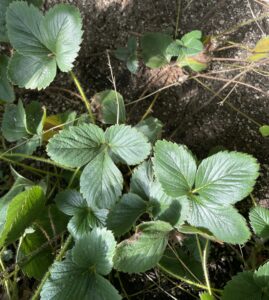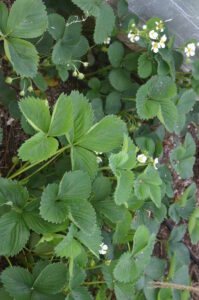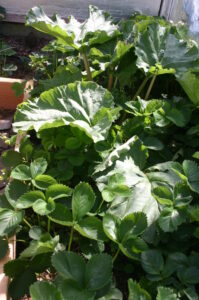How much do you enjoy biting into a luscious, rich red strawberry? If the answer is greatly, you may want to grow your own strawberries in your greenhouse. Doing so isn’t difficult, and the results can be delectable.

To get started, you need to decide what type of strawberry you want to grow. There are three main types: June-Bearing, Ever-Bearing, and Day Neutral. June-Bearing plants, as the name suggests, produce a large crop in June, lasting into mid-July, although in a greenhouse, these plants will often begin to produce fruit earlier. Ever-Bearing strawberries don’t actually produce fruit continually. They typically produce a May/June crop and another, usually smaller crop, around September. If you want fruit most of the summer, try Day Neutral strawberries.
Another strawberry, Fraises de Bois, often called wild strawberries, are Day Neutral and will often crop continually. Although the berries tend to be smaller, they are tastier than larger fruits.
As for how to cultivate strawberries, the easiest method is simply to put new plants in pots full of potting soil mixed with compost. Set the plants at the same height as they were originally grown. If you set them too deeply, they may take longer to grow. If you set them too shallowly, leaving roots exposed, the plants may die. To save space, you can set one plant per 4” or 6” pot and put the pots close together until the plants start to set fruit. At that point, move the pots further apart to give the leaves more access to light. If your fruit has white tops near the stem, the leaves may be shading the plant, so moving the pots further apart is one way to help eliminate this problem.
Strawberry plants generally thrive on sunshine, so make sure your plants get at least 6 hours of sunlight a day. To set fruit, strawberries require 10 or more hours of sunlight daily. To help your plants set fruit in winter, you can use LED grow lights to artificially increase day length.
Be sure to keep your plants properly fertilized too. They should be fed with a balanced fertilizer as soon as flower buds appear. When starting new plants, snip off the first few buds to increase later yields.

Your biggest problem with growing strawberries in a greenhouse is pollination. In general, these plants depend on bees to pollinate them. If you don’t have bees inside your greenhouse, and most people don’t, you may have to use a small paintbrush to transfer pollen from one plant to another.
Another method for growing greenhouse strawberries is by hydroponics. These plants will grow well in an Ebb-and-Flow system, which is one in which the nutrient solution is flooded into a growing bed once or twice a day and then allowed to drain back into the reservoir. However, this system uses electricity to pump the nutrient solution into the growing tanks, and this adds to costs.
Increasing your number of strawberry plants isn’t difficult. Virtually all varieties grow runners, each of which usually produces two or three new plants. Some are more prolific. Certain June-Bearing strawberries can create more than 100 new plantlets in a single season! However, if you decide you want more fruit instead, just snip the runners off as they appear.

One thing to keep in mind when growing strawberries in a greenhouse is that the enclosed space can lead to rot or fungal infections if the plants are well watered. So try to water early in the day to allow the plants time to dry out. Also inspect the plants regularly to spot grey fungi spores early and quarantine any affected plants until they are infection-free. That way, you’ll be assured that the problem doesn’t spread and ruin your entire crop.


